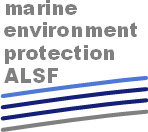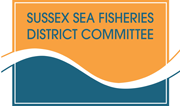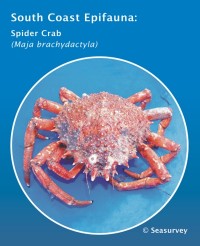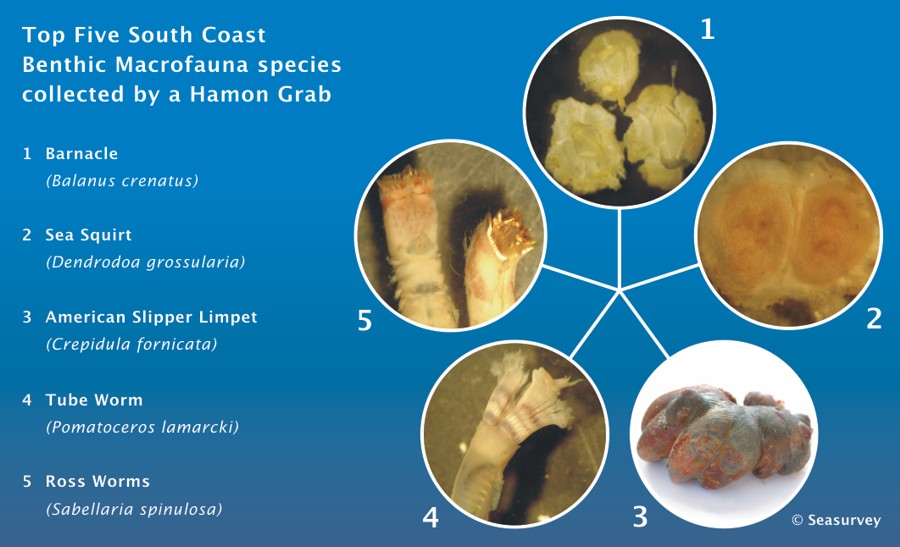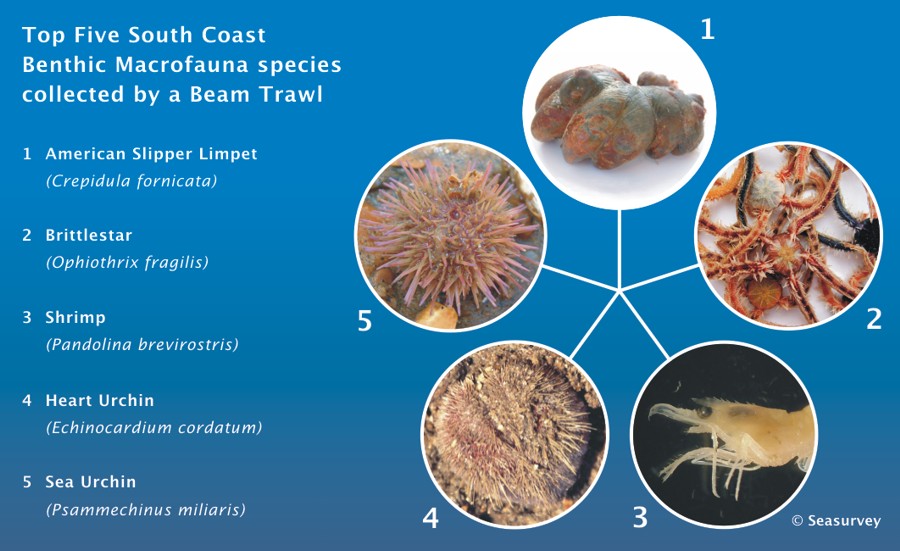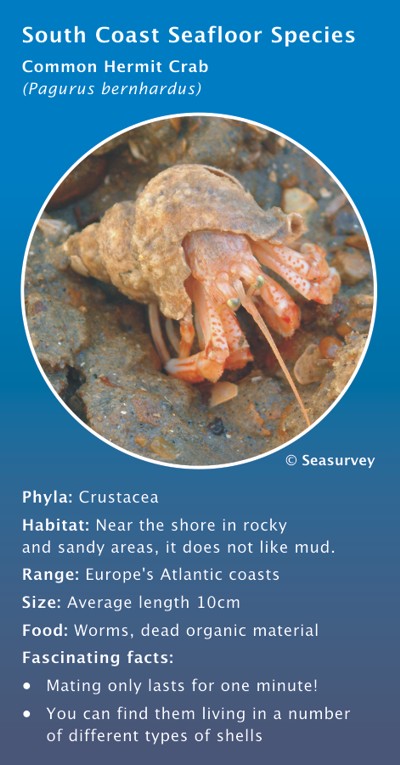Ecologists studied the animals living in and on the seafloor of the South Coast study area. It is important to know what species of animals and how many live in the region, as well as what habitat they like to live in, so that we can protect our amazing coastal sea life.
The focus of the REC ecology research was studying the benthic macrofauna. This term refers to all small animals that live in and on the seafloor. Ecologists divide the benthic macrofauna into two main groups.
Infauna are animals that live in the seafloor, buried in the sediment.
Epifauna live on or just above the seafloor, normally when there are large particles or rocky areas that the animals can attach to.
In addition they studied other larger mobile animals, like fish, which also live on the seafloor.
Unless stated otherwise all sea animal images © Seasurvey; other images © Crown copyright
The South Coast REC Ecology results
This section provides a summary of the South Coast REC results for the ecological research. Click on the links below to find out about each topic, or scroll down to read the entire text
- What is living in the seafloor?
- What is living on the seafloor?
- Seafloor communities
- Seafloor cpecies: Hermit crab
You can find out more about the scientific research techniques mentioned below by visiting the “How we study the seafloor” webpages.
Read our Sustainability webpages to discover how these results will help protect the South Coast REC area.
[jwplayer mediaid=”3884″]
What is living in the seafloor?
 During the REC study ecologists discovered that there are many different animals living in the South Coast seafloor.
During the REC study ecologists discovered that there are many different animals living in the South Coast seafloor.
Working from a boat, the ecologists used a Hamon Grab to collect samples of infauna to study. It is important to note that the Hamon Grab will also collect some epifauna, so often results can contain both types of benthic macrofauna. In total, they discovered 609 different types of animal living within or on the South Coast seafloor.
First, the ecologists recorded the infauna into animal types. The most common animal type in the South Coast was the Annelida, which is a term that describes most marine worms. Each type is made up of lots of different species, for example, the Ross worm and the cat worm are both Annelids.
The ecologists found that diversity of animal species was the same in almost every part of the South Coast study area but that there were more sea animals living on the seafloor close to the Isle of Wight. This is because this area provides good shelter for seafloor animals to live safely.
The ecologists identified combinations or patterns of animals living together from the information they collected. They discovered 13 different groups, groups A to M, that like to live in different environments.
For example, Group K includes brittlestars, porcelain crabs and squat lobsters and lives on clean gravel deposits.
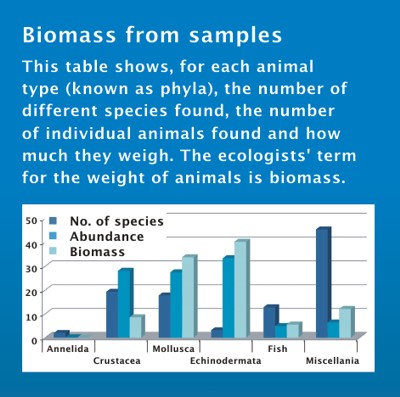 What is living on the seafloor?
What is living on the seafloor?
Using trawling nets along the seafloor is another method for exploring marine life. Ecologists used this method when studying what lives on the South Coast seafloor.
The Beam Trawl collected 24 samples of epifauna and demersal fish for the ecologists to study. It is important to note that the Beam Trawl will also collect some infauna species and so results can include both types of benthic macrofauna. In total, they discovered 260 different types of animal on or just above the surface of the South Coast seafloor.
You can see that the most common animal types from the trawl samples were Crustacea, Mollusca and Echinodermata. Ecologists found that the diversity and number of animals was consistent across the whole South Coast area.
Again, they also look for different combinations of animals that live together out of the larger epifauna. This time they found 6 groups, numbered from I to VI.
For example, Group I includes prawns, the American slipper limpet and small crabs, and likes to live in areas where the seafloor is made up of mixed sediment sizes with occasional cobbles and red seaweed.
>Back to the top of the page
Seafloor communities
Different combinations of animals and plants like to live in different underwater environments. We can think of these groups of animal and plants as seafloor communities.
Understanding seafloor communities and their habitats is important to help us protect sea life in the South Coast area and all around the coast of the United Kingdom. Gathering together information about seafloor animals and the geology for the area, ecologists are able to map the seafloor communities and their habitats.
This is a complicated process called modelling, which uses computer programs to help predict how the results from our samples stations can tell us about the whole area. This is needed because it is not possible to take grab or trawl samples from everywhere in the study area and we need to fill in the gaps.
Ecologists give each seafloor community and its habitat a classification called a biotope, which provides a description of its key components. The ecologists identified 24 different biotopes in the South Coast area.
[jwplayer mediaid=”3888″]
This biotope system allows us to predict areas of the seafloor where endangered species live, or where diversity is high, so that we can ensure they are protected. We can also keep an eye on these areas to see how changes, caused by humans or nature, affect the numbers and types of animals present.
Seafloor species: Hermit crab
Unless stated otherwise all sea animal images © Seasurvey; other images © Crown copyright

